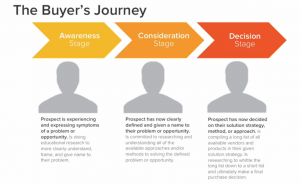Search engine optimization has come a long way over the past 25 years. Long gone are the days of publishing high volumes of low-quality, wafer-thin content and expecting your search engine rankings to increase. Today, SEO is as much an art as it is a science. It requires content writers and digital marketers (now one and the same) to understand search engine ranking factors, prioritize searcher intent, and publish valuable, high-quality content that appeals users and Google’s algorithms.
This blog post will cover nine SEO-friendly content writing tips to improve rankings. But before we get into it, I have a PSA for all the digital marketers and content writers out there: When devising a strategy to drive organic traffic to your website, remember that content writing and SEO go hand in hand. SEO is not some magic skill only technical people can execute properly. At its core, SEO is about writing content that’s better than the competition—and yes, utilizing on-page and technical SEO best practices along the way.
So, without further ado, here are nine tactics you can use to outrank your competitors in search engine results.
- Understand Search Engine Ranking Factors
- Use the Right Keywords
- Identify and Capture Search Intent
- Optimize Content to Obtain Google Featured Snippets
- Update Old Content
- Apply the Skyscraper Method
- Prioritize High-Quality Inbound and Outbound Links
- Boost User Signals with On-Page Best Practices
- Be Aware of Site Structure and Technical SEO Best Practices
1. Understand Search Engine Ranking Factors
Before you can outrank your competition, you need to understand the foundational signals that search engines look at when evaluating and ranking content. The four most important ranking factors are content, links, site structure, and HTML tags.
Content
Ever since the 2011 Panda algorithm update, Google has prioritized content as its number one ranking factor. When you publish any piece of content—whether it be a blog, webpage, or pillar page—it should clearly cover a specific topic in-depth, be well-written, and above all else, provide value to the reader.
According to Search Engine Land’s Periodic Table of SEO Factors, the seven most heavily weighted content ranking factors are:
- Quality: Well-written and valuable
- Research: Demonstrates authority
- Keywords: Incorporates search terms appropriately
- Freshness: Is timely and relevant
- Multimedia: Contains images, video, or audio to enhance user experience
- Answers: Directly answers the search query
- Depth: Covers a topic thoroughly
Understanding what each of these factors means and how to apply them is the first step toward writing content that’s competitive.
Links, Site Structure, and HTML Tags
Aside from content, the second, third, and fourth most heavily weighted ranking factors are links, site architecture (how your site is built), and HTML tags.
When a search engine crawls and indexes your site, it also looks at non-content factors like inbound and outbound links, URL structure, page load speed, time on page, and keyword usage in tags to understand what your site is about and how to rank your pages.
Search engine algorithms are designed to deliver users the best content from the best websites. Implementing linking, site structure, and HTML best practices within your website content makes it easier for search engines to crawl and index your content. The quicker and more accurately a search engine crawls and indexes your content, the faster you can increase rankings and traffic.
2. Use the Right Keywords
Although there’s been debate in the digital marketing community as to whether or not keyword research is dead, keywords are still a crucial part of SEO.
Keyword research helps you:
- Determine what topics people are talking about.
- Identify search volumes for topics.
- Understand how difficult it may be to rank for a topic.
Each piece of crawlable content you create should have a unique primary keyword target and also use Latent Semantic Indexing (LSI) keywords (natural variations of your primary keyword) throughout.
Before you start writing, brainstorm topics you know your buyer personas care about. Then, perform keyword research to identify the best ranking opportunity. The type of keyword you target will depend on the type of content you’re creating.
Blog posts should target mid- to low-volume, low-competition long-tail keywords, while comprehensive resources like pillar pages can go after shorter-tail seed keywords that have high volume and high competition. When creating blog posts, remember that longer-tail, lower competition keywords have higher conversion rates and are easier to rank for.
3. Identify and Capture Search Intent
Once you’ve found a viable primary keyword target, validate and decide how you will write about it by digging into searcher intent. Identify what the searcher is looking for when they type the query into a search bar, and then cover the topic in a way that directly meets their needs.
According to Google’s search evaluation quality guidelines, there are four categories of searcher intent:
- Know: The searcher wants to find information on a topic to answer a question.
- Do: The searcher wants to learn how to take a specific action.
- Website: The searcher wants to find a specific resource.
- Visit in person: The searcher wants to find a location to go to.
Before you start writing, identify which of these four categories your primary keyword target falls under. Then, validate the category by looking at the content currently ranking for the keyword. Are your competitors targeting the same type of search intent you’ve identified for the query? Look at how they’ve structured their content to satisfy searcher needs. Structure your content in a similar and better way.
Pro Tip: Use SERP Features to Satisfy Searcher Intent Better Than Your Competition
How do you satisfy searcher intent better than your competitors? Pinpoint the aspects of searcher intent that top-ranking articles are failing to satisfy.
Are there any important nuggets the competition is leaving out that your reader may want to know about? You can clue into what these gaps could be by looking at the “People also ask” and “Related searches” sections of the search engine results page (SERP). Include answers to the relevant queries in your content.
4. Optimize Content to Obtain Google Featured Snippets
A relatively new search engine feature is the Google Featured Snippet. This SERP feature aims to answer a user’s question immediately. You can optimize your content in a way that increases your chances of obtaining this feature. Here’s how to do it:
- Use SEMrush or another SERP analysis tool to identify if a featured snippet exists for the keyword you’re targeting. Only 12.3 percent of queries have one.
- Identify how the featured snippet is structured. Is it a paragraph, list, or table?
- Ask the question the snippet answers in one of your blog post subheadings.
- Answer the question immediately after the subheading. Write a concise answer that’s better than the current one in the featured snippet. Be sure to use the same structure as the current snippet.
More Tips for Obtaining the Featured Snippet
There are several other tactics you can use to increase your chances of obtaining the featured snippet:
- Optimize content you’re already ranking high for with a featured snippet answer; 99.58 percent of snippets come from pages already on page one of a SERP.
- Use facts and figures in your answers.
- Answer multiple “People also ask” questions within your content. Ahrefs found that most featured snippets are triggered by longer-tail keywords like those found in this section of the SERP.
5. Update Old Content
Search engines prioritize fresh content. As previously mentioned, freshness is the fourth most heavily weighted content ranking factor. Updating old blog posts with better, more helpful, and authoritative information can boost rankings and traffic drastically.
In fact, when HubSpot made updating old content a priority on its editorial calendar (optimizing multiple posts per week), it saw an average increase in organic search views of 106 percent per post.
Here’s how to execute this strategy yourself:
- Identify blog posts with the potential to rank higher for keywords that have substantial search volume.
- Update or rewrite the post to improve accuracy and thoroughness.
- Implement on-page SEO best practices and optimize for conversion with relevant in-line and end-of-post CTAs.
- Publish the optimized article—making sure to change the publish date so that search engines re-crawl and re-index the content.
6. Apply the Skyscraper Method
The Skyscraper method is the process of identifying content you want to outrank and creating something better. It is both a content writing and link-building strategy, but for the purpose of this blog post, we’ll focus on how to execute it in terms of writing.
Once you find the piece of content you want to outrank, you should:
- Think about why Google has prioritized this page in its results. Chances are, the ranking piece of content is comprehensive, goes in-depth, and provides high value to the reader. Understand why the content is performing well so you can take your piece of content to the next level.
- Create something better than the ranking article. You can do this by adding length, depth, freshness, and improving the user experience.
Be strategic and intentional about the improvements you make. Anything you create should first and foremost add value. Ahrefs cautions writers that “adding 25 mediocre tips to an existing list of 25 excellent tips isn’t an improvement. Sure, your new version might be lengthier, but you’re not adding any real value.”
When executed correctly, the Skyscraper method generates results. Brian Dean of Backlinko was able to double organic traffic in 14 days by using the method.
7. Prioritize High-Quality Inbound and Outbound Links
Links tell search engines and users a lot about the value, reputation, and quality of your content. When linking to outbound sources in your blog posts and pillar pages, make sure that they are to trusted, quality websites. When seeking backlinks, target websites that are authorities on the topic you’re writing about.
Remember that backlinks to your content are one of the most heavily weighted Google ranking factors, dictating 20.94 percent of what ranks versus what doesn’t. High-quality links can drive up rankings and traffic just as much as low-quality and spammy links can hurt your ability to rank.
8. Boost User Signals with On-Page Best Practices
Over the past few years, Google has started to incorporate User Experience Signals into its search algorithms. The way you use HTML tags in your content can have an indirect impact on these types of signals.
Because HTML tags are one of the first things search engines crawl to understand what your content is about, content writers need to understand the importance of using the target keyword and LSI keywords in the title, meta description, headings, and first 100 words of a piece of content. Placing keywords in these HTML tags can improve user experience, bounce rate, dwell time, and click-through rate. High performance in these areas has been shown to correlate with higher search engine rankings.
9. Be Aware of Site Structure and Technical SEO Best Practices
Although optimizing site structure and improving technical SEO isn’t necessarily part of a content writer’s job, it’s important to be aware of how these factors can impact your content’s ability to rank.
How your site is built, page load speed, security, and crawlability all directly impact a search engine’s ability to index and rank your content quickly and accurately. For example, over the past few years, search engines have started prioritizing sites that use a topic cluster-driven site structure—a structure that links blog posts targeting longer-tail keywords to comprehensive resources or pillar pages targeting shorter tail, high-volume seed keywords.
If you have poor site structure and technical SEO errors, getting your content to rank is next to impossible—no matter how well-written it is. If you’re having a hard time seeing organic traffic results from your well-written content, work with a developer or technical SEO expert to monitor site health and tackle errors that can have the biggest impact on crawlability.
Digital & Social Articles on Business 2 Community
(34)
Report Post




